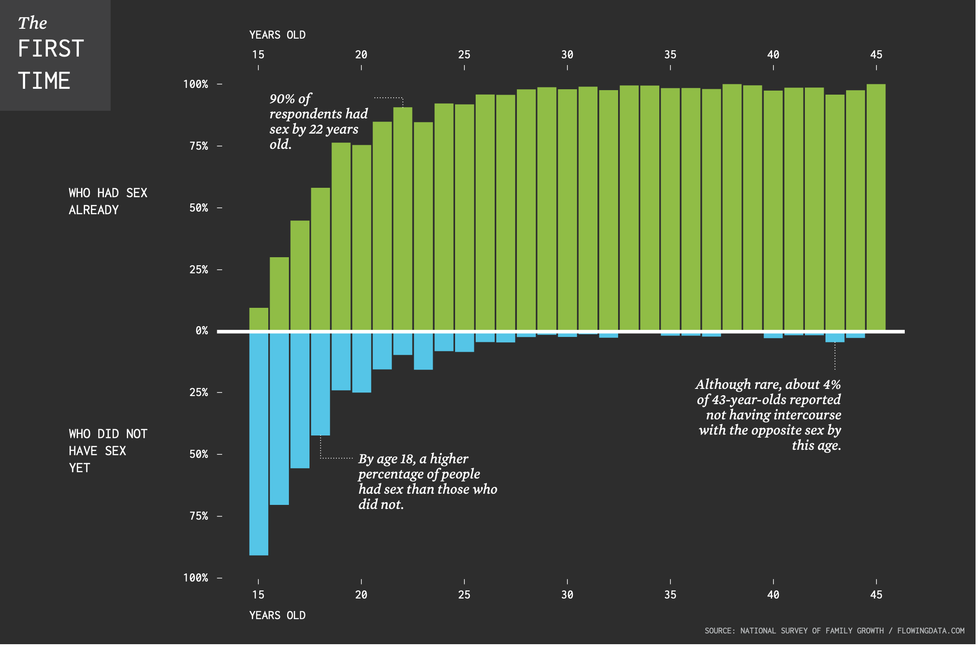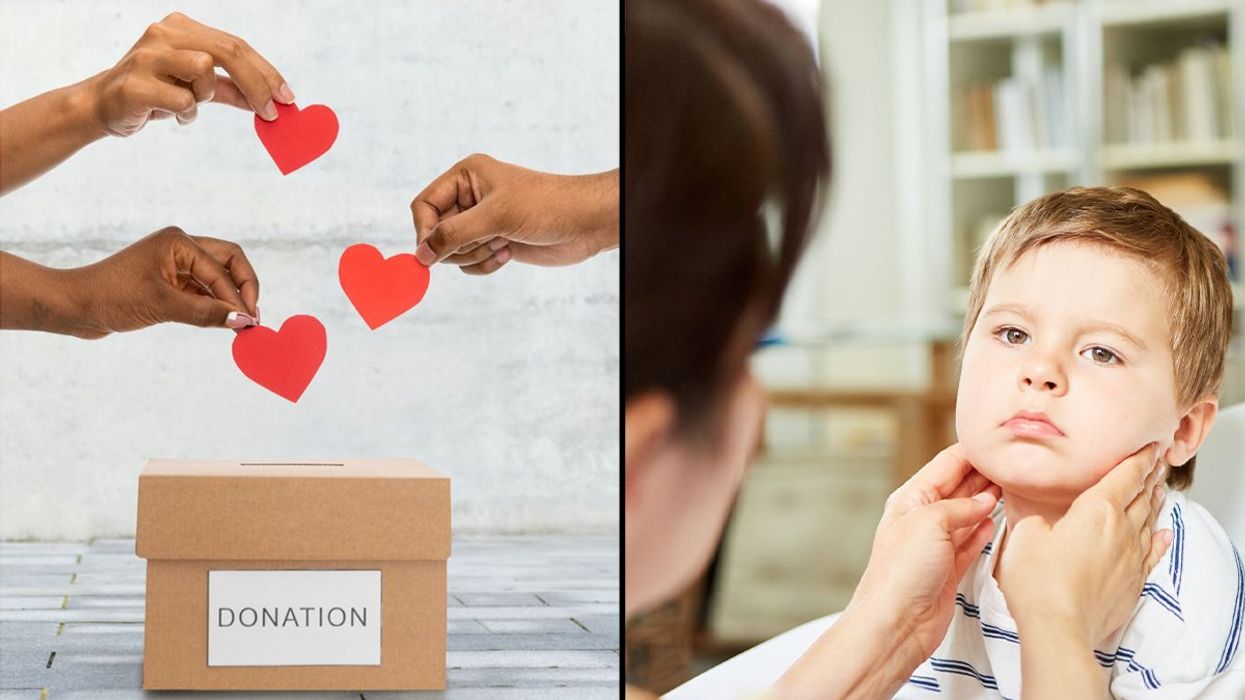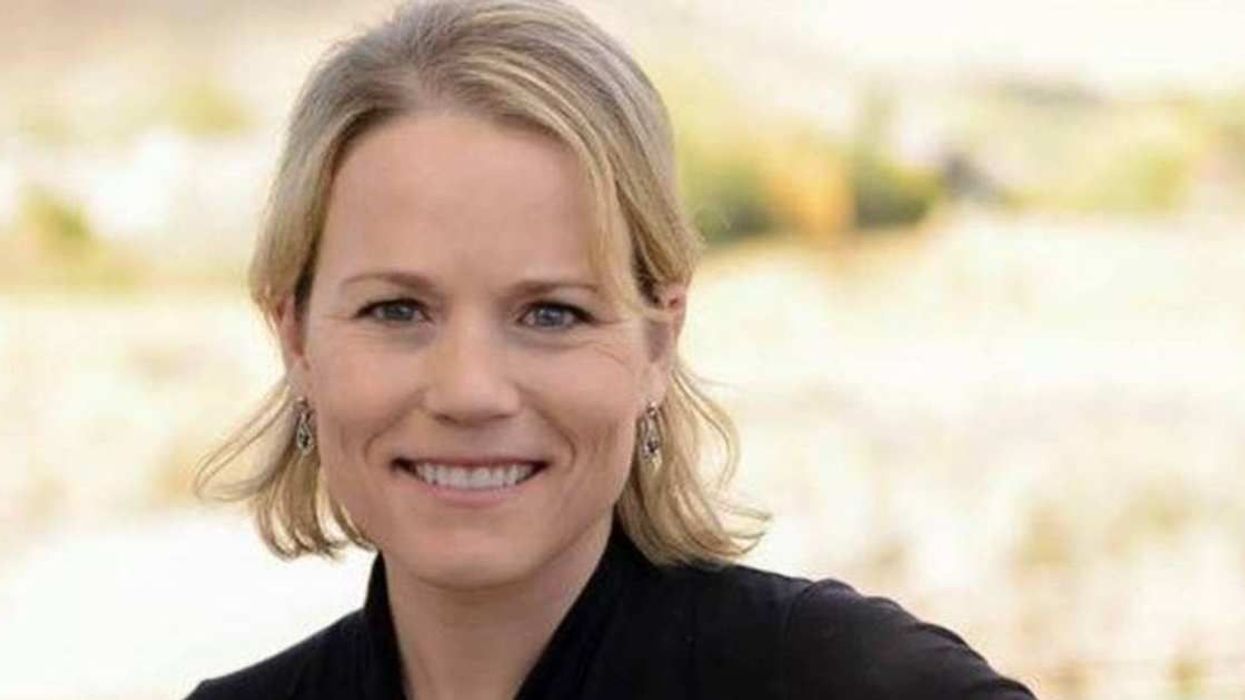The National Survey of Family Growth has recently released data on the ages Americans were when they lost their virginity. The figures themselves might not come as a surprise, but when represented graphically, they may cause you to see the occurrence of the life event in a whole new way.
The group administering the survey was overseen by the Centers for Disease Control and Prevention and was based on 2013–2015 public use data files.
The big caveat here is that this only covers heterosexual subjects. One would hope that it would be more inclusive of such a large and distinct segment of the population, but it’s likely that in future years more sexual orientations and relationships will be included in the study.
Here’s the graph, with the later years showing a little statistical noise. (People didn’t actually regain their virginity from 39–40; it was a function of parsing the data):

As you can see, between ages 16–20, half the population lost their virginity, and by 22 years of age, 90 of the population had. And if you haven’t lost your virginity by age 30, the likelihood that you ever will falls dramatically. That’s not a pessimistic statement, but, instead, could have more to do general disinterest, a physical disability, or an inability to perform sexually.
As you can see from the chart, the number tends to stabilize at a 4 percent virginity rate at age 43. The data only covered subjects age 15–45, so it’s unclear how much further that 4 percent would fall over the later years of life.
This article originally appeared on 03.20.17
More on Good.is
Is Pedophilia a Sexual Orientation? A Psychologist Breaks Down What Makes a Jerry Sandusky
The Difference Between Sex Ed In Europe And The U.S.
Psychologists have discovered the specific dance moves that attract the opposite sex

















 A symbol for organ donation.Image via
A symbol for organ donation.Image via  A line of people.Image via
A line of people.Image via  "You get a second chance."
"You get a second chance." 


 36 is the magic number.
36 is the magic number. According to one respondendant things "feel more in place".
According to one respondendant things "feel more in place". 
 Some plastic containers.Representational Image Source: Pexels I Photo by Nataliya Vaitkevich
Some plastic containers.Representational Image Source: Pexels I Photo by Nataliya Vaitkevich Man with a plastic container.Representative Image Source: Pexels | Kampus Production
Man with a plastic container.Representative Image Source: Pexels | Kampus Production
 Canva
Canva It's easy to let little things go undone. Canva
It's easy to let little things go undone. Canva
 Photo by
Photo by 
 Kids know the good adults from the bad.
Kids know the good adults from the bad.